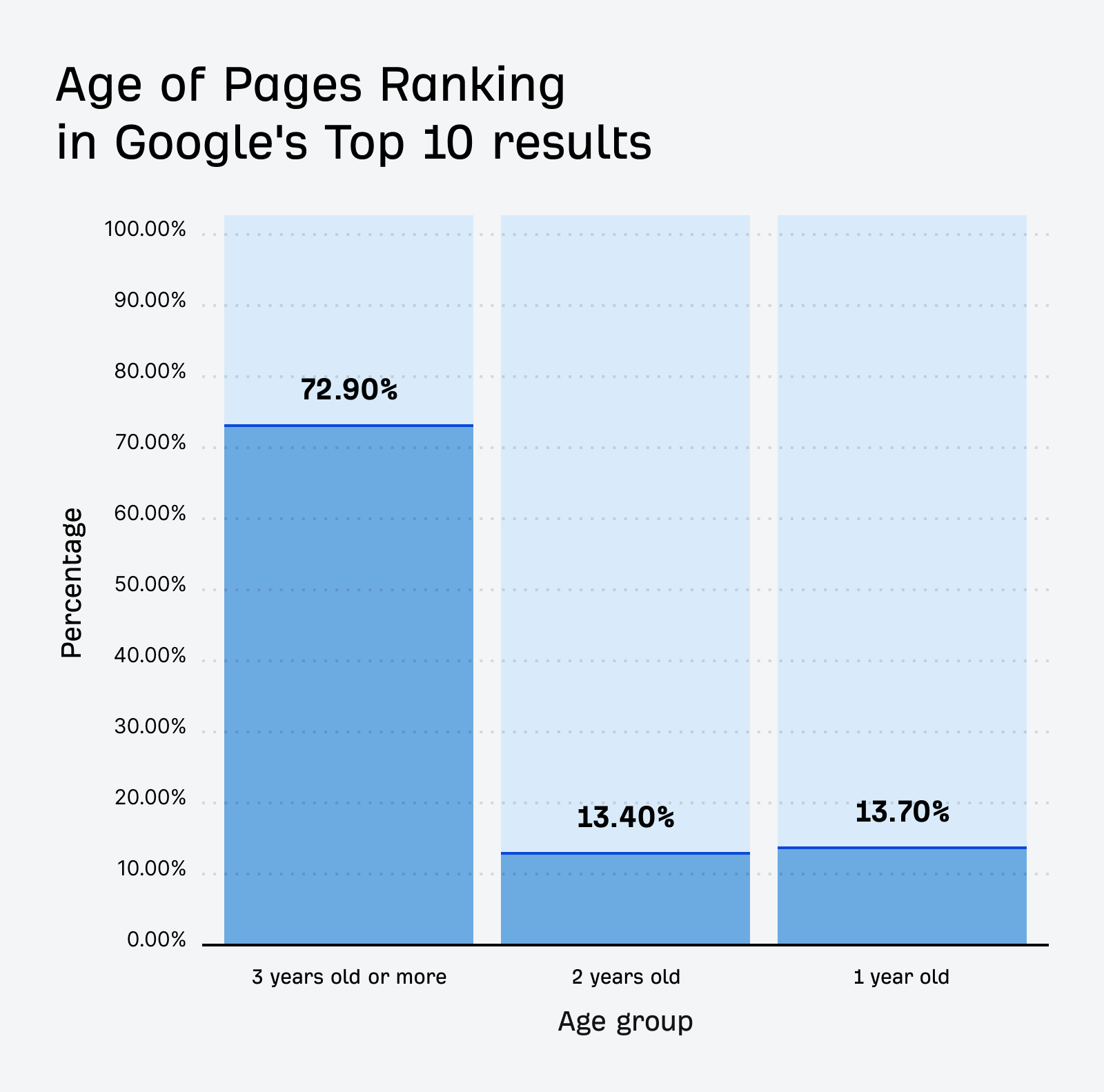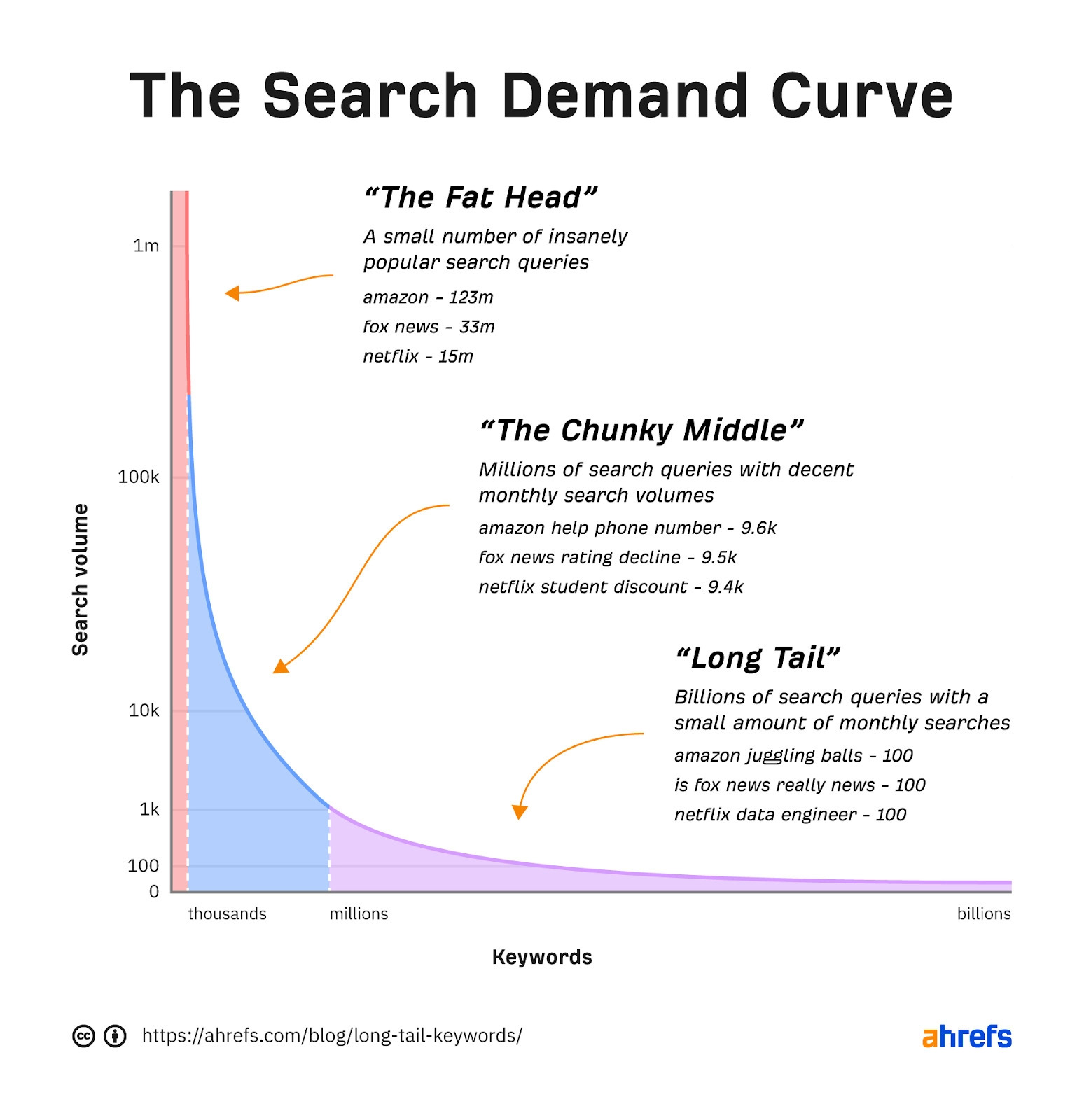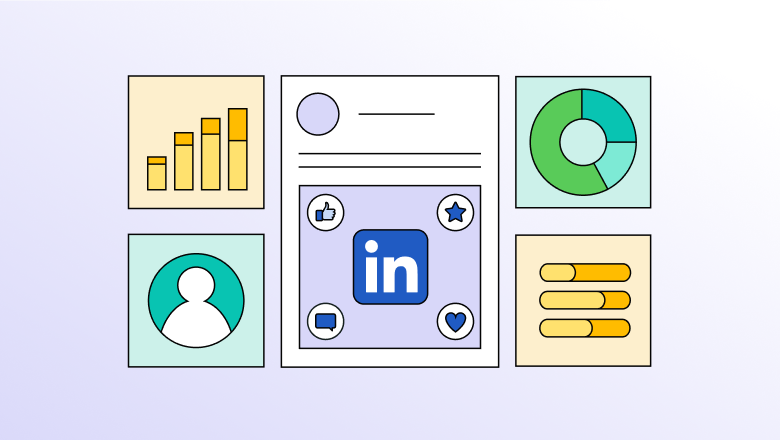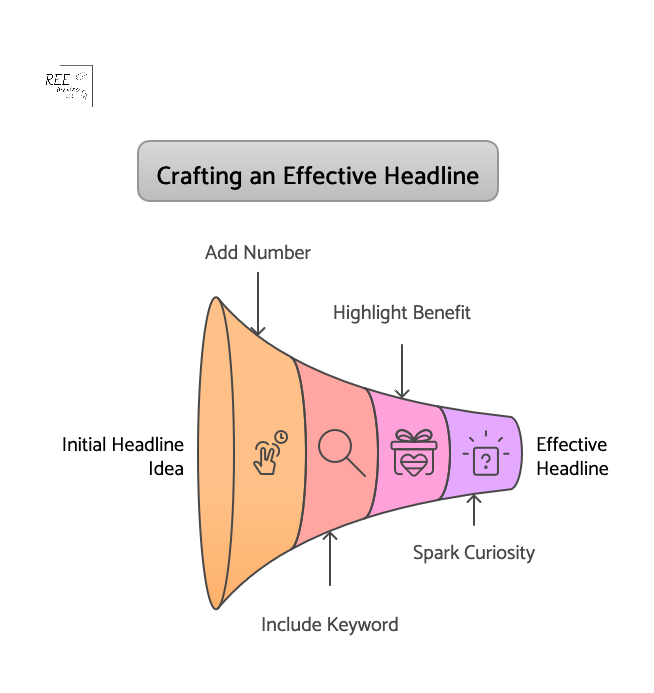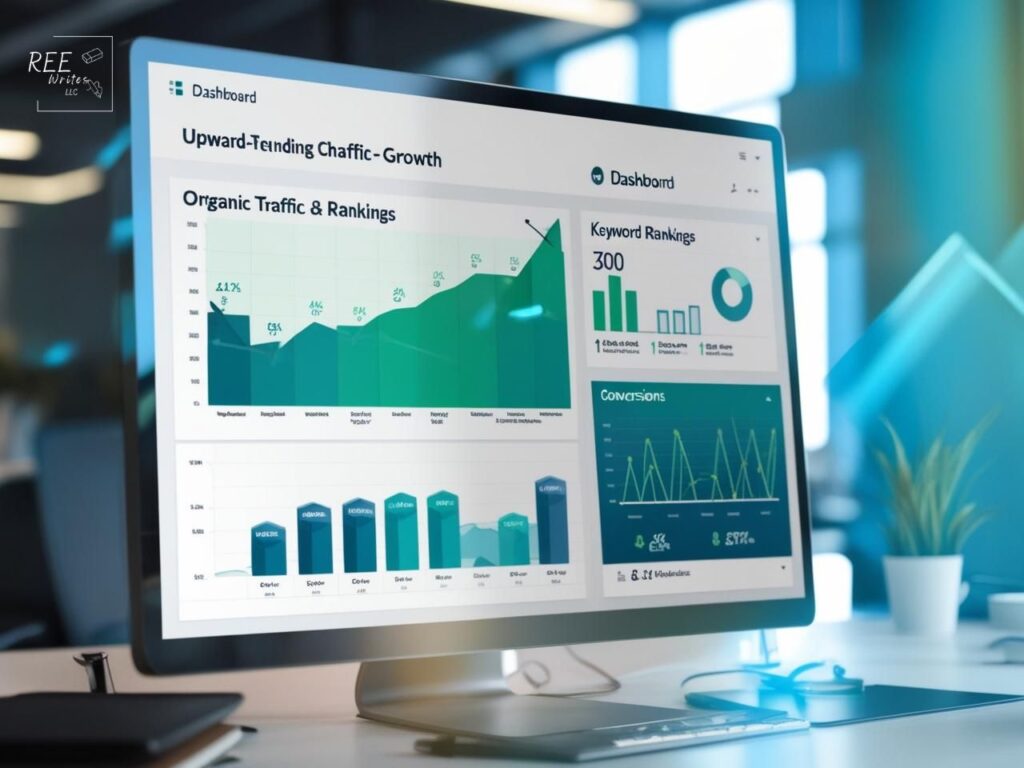How do you build trust and credibility when you’re a one-person show?
LinkedIn newsletters may be one way– they get 3 times more engagement than regular posts. That’s huge for solopreneurs who need every advantage to stand out.
But how do you use a LinkedIn newsletter for lead generation? And SHOULD it be a part of your content strategy?
It’s worth finding out. We’ll discuss how you can use a LinkedIn newsletter as a powerful tool to build your solo business by:
- helping you attract high-quality clients
- establishing thought leadership
- growing your business without a marketing team
Contents
- LinkedIn Newsletters vs. Articles
- LinkedIn Newsletters vs Traditional Email: The Trade-offs
- Why LinkedIn Newsletters Still Work for Solopreneurs
- Who Should Use LinkedIn Newsletters?
- Can You Build Your Email List with LinkedIn Newsletters?
- How to Set Up Your LinkedIn Newsletter for Business Growth
- Content Strategy for Solopreneur Newsletters
- Growing Your Newsletter Audience as a Solopreneur
- Content Ideas That Convert Prospects to Clients
- Measuring ROI and Business Impact
- Wrap-up
LinkedIn Newsletters vs. Articles
What’s the difference between LinkedIn newsletters and articles?
LinkedIn’s newsletters and articles are different, and they serve different purposes in your marketing toolkit:
- Newsletter: a regular publication LinkedIn sends directly to your subscribers’ inboxes. They also get a LinkedIn notification every time you publish.
- Article: a long-form piece of content that sits on your LinkedIn profile. This distinction matters more than you might think for your business growth. Articles sit on your profile with no built-in audience or automatic reach in the feed (although they’re excellent for SEO).

How Creator Mode affects your content distribution options
LinkedIn’s quietly ended “Creator Mode” in 2024, but its features are still available to amplify your content reach.
When you enable it, your primary profile button switches from ‘Connect’ to ‘Follow’, making it easier for people to follow your content without needing your approval. You’ll also get enhanced analytics that show content performance up to a year prior, plus insights into your best-performing posts and follower growth patterns.
When to use newsletters versus articles for maximum impact
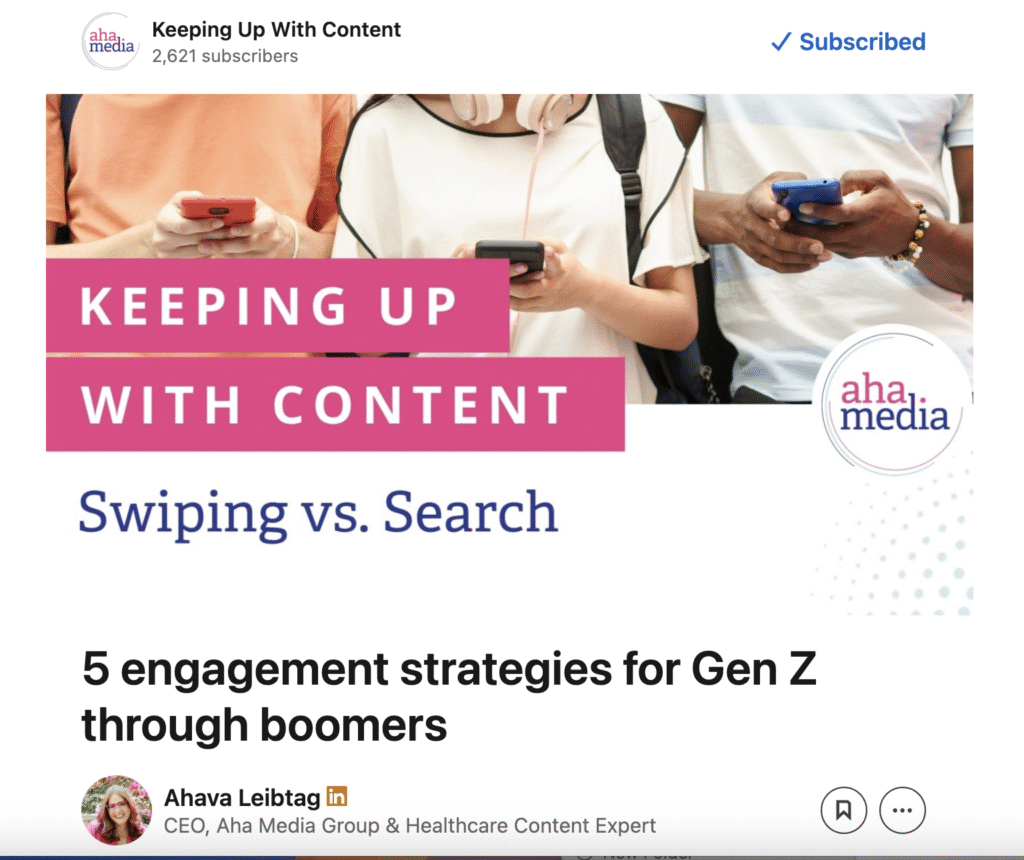
Use newsletters when you want to build a loyal, engaged audience that expects regular content from you. They’re perfect for sharing:
- weekly business insights
- industry updates
- personal entrepreneurship stories
The consistent delivery of newsletters builds trust and keeps you top-of-mind with potential clients.
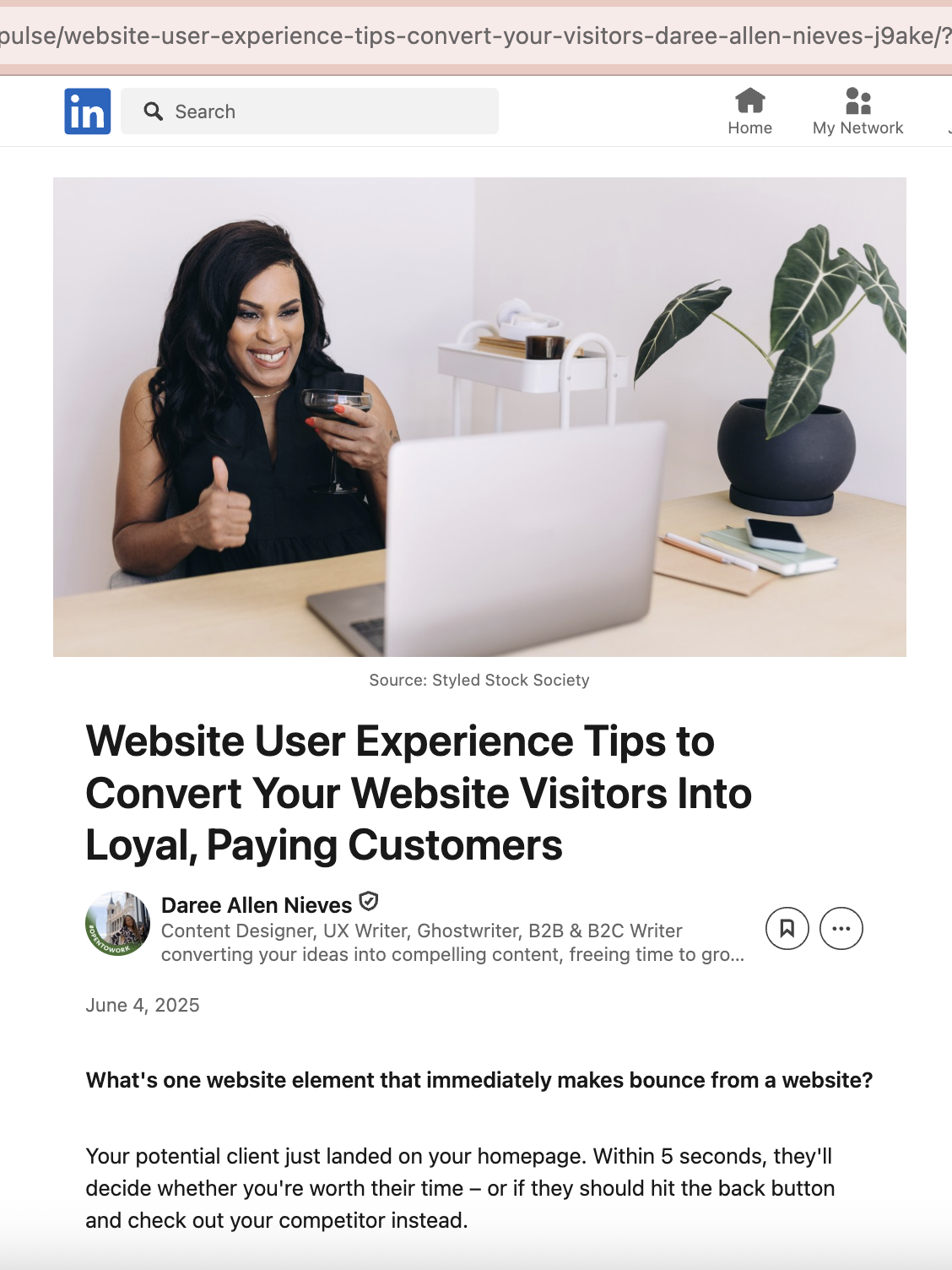
Articles work better for thought leadership pieces that you want to rank in search results, and serve as evergreen content on your profile. They’re ideal for:
- in-depth case studies
- comprehensive guides
- content that showcases your expertise to new visitors discovering your profile
Engagement patterns show newsletters outperform articles for audience building
Newsletter subscribers are more likely to read and interact with your content, because they’ve actively chosen to receive it. The notification system ensures your content reaches people directly, bypassing the LinkedIn algorithm that limits visibility. This engagement advantage makes newsletters particularly valuable for solopreneurs who need consistent client touchpoints.
LinkedIn Newsletters vs Traditional Email: The Trade-offs
The ownership problem
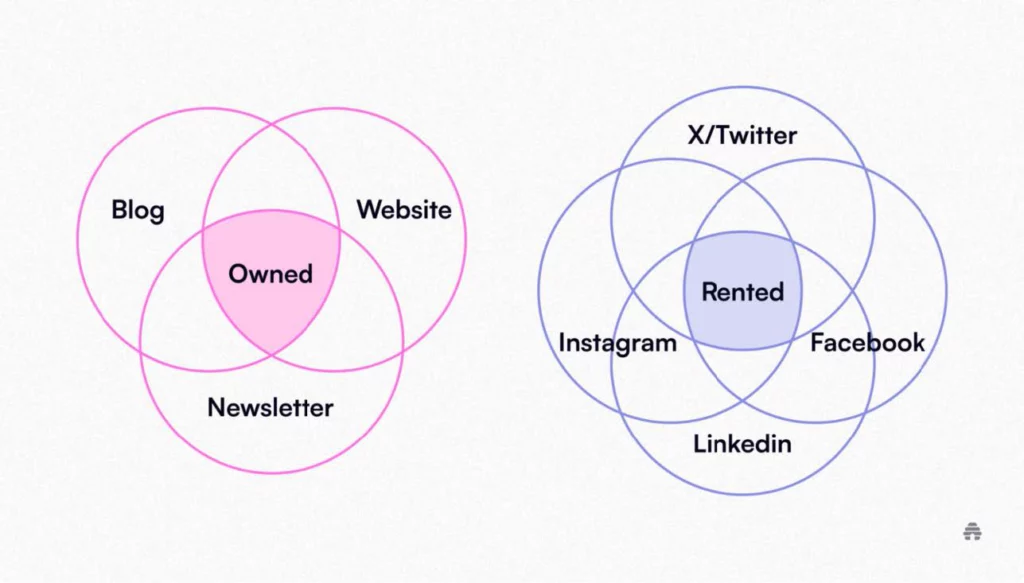
You don’t own your LinkedIn subscriber list. LinkedIn controls the platform, and if they change how newsletters work or remove this feature entirely, you could lose access to all your subscribers in an instant. This platform dependency makes traditional email newsletters more secure for long-term business building.
Email newsletters give you complete control over your audience, with no algorithm standing between you and your readers. There’s no risk of platform changes affecting your ability to reach subscribers, making email a more reliable foundation for your marketing efforts.
Benefits of LinkedIn’s built-in audience provide immediate reach advantages
LinkedIn newsletters offer easy and instant distribution to your entire network when you publish your first edition. This immediate reach gives you a major head start that’s difficult to match with traditional email marketing, where you start with zero subscribers and must build from scratch.
The platform also provides automatic discoverability. Your newsletters get indexed by Google, helping people find your content without using LinkedIn.
Long-term business implications favor owned email lists for sustainability
While LinkedIn newsletters offer easier setup and immediate reach, email marketing provides better long-term security for your business. The analytics limitations on LinkedIn restrict your ability to deeply understand your audience, compared to standard email platforms that offer detailed subscriber insights.
However, in 2025, LinkedIn added two metrics for newsletters: email sends, and open rate.
Why LinkedIn Newsletters Still Work for Solopreneurs
Smart solopreneurs use both strategically—LinkedIn newsletters for reach and visibility, and email newsletters for owned audience development and deeper subscriber relationships. Here’s why you may want to follow suit.

Direct access to your audience’s inbox creates consistent touchpoints
LinkedIn newsletters land directly in subscribers’ LinkedIn inboxes and trigger notifications, ensuring your content gets attention.
This direct access means you’re not competing with the LinkedIn algorithm that buries your regular posts in a feed among hundreds of other updates. You’re a trusted voice they choose to hear from regularly.
The notification system keeps you visible to your audience between their regular LinkedIn sessions, extending your reach beyond when people are actively browsing the platform. Newsletters are public for everyone to see.
Higher engagement rates compared to regular posts drive better business results

Subscribers who receive your newsletter are already interested in your content, leading to higher engagement rates than typical LinkedIn posts. This engaged audience is more likely to comment, share, and inquire about your services.
A consistent delivery schedule also trains your audience to expect and look for your content, building anticipation that regular posts can’t match.
Cost-effective marketing requires no additional tools or subscriptions
Unlike email marketing platforms that charge monthly fees, LinkedIn newsletters are completely free to use. You don’t need to learn new software, set up integrations, or manage technical aspects, because everything works within the LinkedIn interface you already know.
This zero-cost approach makes newsletters attractive for solopreneurs with tight marketing budgets while building their businesses.
Who Should Use LinkedIn Newsletters?

Source: Styled Stock Society
Consultants and freelancers benefit most from regular client touchpoints
If you’re a consultant or freelancer, newsletters help you stay visible to past, current, and potential clients. Delivering content regularly keeps your expertise front-of-mind when clients need services or referrals.
Service-based entrepreneurs can showcase expertise effectively
Coaches, trainers, and other service providers can use newsletters to demonstrate their knowledge and build trust with prospects. Sharing success stories, tips, and insights through newsletters positions you as an expert while nurturing potential client relationships.
B2B solo entrepreneurs find their ideal audience on LinkedIn

LinkedIn’s professional user base is perfect for business-to-business (B2B) solopreneurs who target other businesses. Whether you’re selling software, marketing services, or business consulting, your ideal clients are already active on the platform and receptive to business-focused content.
Can You Build Your Email List with LinkedIn Newsletters?
Of course you can, and it’s a great content strategy. You can balance LinkedIn engagement with list-building goals by providing value on LinkedIn, while encouraging deeper engagement through your owned channels. Here’s how.
Create lead magnets that work across both platforms for maximum impact

Use your LinkedIn newsletter to promote valuable lead magnets that encourage email subscriptions. Embed links to relevant resources, guides, or tools that require email signup. This strategy lets you leverage LinkedIn’s reach while building your own email list simultaneously.
Be sure to also add your lead magnet to the Featured section of your LinkedIn profile (select the three dots on the top right, and click Feature on top of profile).
Drive newsletter readers to owned audiences
For long-term security, include calls-to-action (CTAs) in your LinkedIn newsletters that direct readers to your email list or website. This creates a funnel from LinkedIn’s platform to your owned channels, reducing platform dependency over time.
How to Set Up Your LinkedIn Newsletter for Business Growth

To create a LinkedIn newsletter, go to your feed and select Write article.
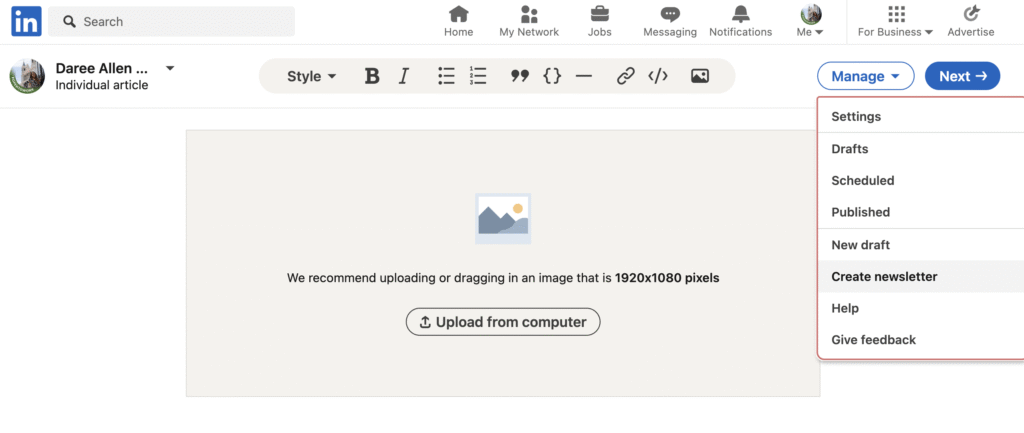
Then click Manage > Create newsletter.
Choose a business-focused name that clearly communicates value
Give your newsletter a descriptive name that immediately tells people what they’ll get. Avoid clever or branded names in favor of clear, specific titles that communicate obvious value. You only get 30 characters, so make them count.
Examples of effective newsletter names include “Digital Marketing Tips” rather than something clever but vague. Clear beats clever every time when it comes to subscriber conversion, because when you confuse them, you lose them.
Write a compelling description that attracts your ideal clients
Use your 120-character description to tell readers exactly why they should subscribe to your content. List the specific topics you’ll cover and the value they’ll receive. Be direct about who your content serves and what problems you’ll help solve.
Focus on benefits rather than features. Instead of using a generic phrase like “weekly newsletter,” explain “weekly strategies to grow your consulting business” or “actionable marketing tips for solopreneurs.”
LinkedIn doesn’t make it easy to find newsletters on the platform. So be sure to pin it to the Featured section of your profile.
Set a realistic publishing schedule you can maintain

Choose a daily, weekly, bi-weekly, or monthly publishing schedule. As a solopreneur, weekly or bi-weekly often works best, because it’s frequent enough to stay visible without overwhelming your content creation capacity.
Consistency matters more than frequency. It’s better to publish bi-weekly content reliably than to start weekly and burn out after a month.
Content Strategy for Solopreneur Newsletters
Balance personal stories with business insights to build connection

Share your entrepreneurship journey along with business tips and behind-the-scenes (BTS) content to create authentic connections with your audience. People want to work with solopreneurs they know, like and trust, and personal stories help build that relationship:
- Challenges you’ve overcome
- Lessons learned from client work
- Insights and frameworks from building your business
Provide actionable tips that show your expertise
Each newsletter should include practical advice readers can implement immediately. This demonstrates your knowledge while providing real value that keeps subscribers engaged and looking forward to your next edition.
Focus on specific, tactical advice rather than high-level concepts. Readers should finish your newsletter with clear next steps they can take to improve their business or solve a problem.
Use industry trends to share your unique perspective
Comment on industry developments through your unique lens as a solopreneur. This positions you as a thought leader while helping subscribers understand how broader trends affect their specific situations.
Your individual perspective as a solo business owner provides value that large companies can’t match. So leverage this authenticity in your content strategy.
Growing Your Newsletter Audience as a Solopreneur
Leverage existing client relationships for initial subscriber growth

Source: Styled Stock Society
Your current and past clients make ideal initial subscribers since they already know and trust your expertise. Personally invite them to subscribe, and ask for their feedback on early editions.
Use your existing network strategically. Reach out to colleagues, partners, and professional contacts who might find your content valuable and be willing to share it with their networks.
Cross-promote through your other marketing channels consistently
Every touchpoint should mention your newsletter as a way for people to stay connected with your expertise. Promote your LinkedIn newsletter:
- in your email signature
- on your website
- on your other social media profiles
- during networking conversations
Include newsletter subscription CTAs in your LinkedIn posts, comments, and direct messages when appropriate and valuable to the recipient.
Content Ideas That Convert Prospects to Clients
Here are a few content ideas for your newsletters.
Weekly business tips establish your expertise and provide ongoing value
Share practical advice that helps your ideal clients solve common problems. This positions you as a valuable resource while demonstrating the depth of your knowledge and experience.
Focus on tips that relate directly to services you offer, creating natural opportunities for readers to see how you might help them with bigger challenges. For more ideas, check out my guide to creating evergreen content.
Client success stories build credibility and showcase results

Source: Styled Stock Society
Share case studies that highlight challenges you’ve helped clients overcome. This social proof demonstrates your capabilities while giving prospects insight into how you work.
Include specific results when possible, showing the tangible value you provide to clients.
Tool reviews position you as a knowledgeable industry resource
Review software, books, or resources relevant to your audience. This type of content provides value, showing that you stay current with industry developments and can guide others to make smart choices in that space.
Measuring ROI and Business Impact
Track newsletter metrics that connect to actual business growth

It’s important to monitor metrics like subscriber growth, open rates, and engagement levels, but you should also track how newsletter content leads to client inquiries and business opportunities. Look for patterns in which content types generate the most business interest.
LinkedIn’s analytics show basic engagement data, but you’ll need to track business outcomes separately to understand your newsletter’s true ROI. Keep simple records of which newsletter topics or formats generate the most business inquiries to refine your content strategy over time.
Connect newsletter engagement to client acquisition for clearer ROI
Take note when newsletter subscribers reach out about services, mention your content in sales conversations, or refer others to your business. This connection between content and revenue helps justify the time investment in newsletter creation.
Wrap-up
LinkedIn newsletters offer solo entrepreneurs a unique opportunity to build relationships, showcase expertise, and grow their business organically. However, they shouldn’t be your only marketing strategy. The biggest limitation is that you don’t own your subscriber list, which creates platform dependency risks.
The smart approach? Use LinkedIn newsletters to build authority and attract your ideal clients, while simultaneously driving readers to your owned email list. This gives you the best of both worlds: LinkedIn’s built-in audience and discovery power, plus the security of an owned audience you can reach anytime.
Start with one LinkedIn newsletter focused on your ideal client’s biggest challenges. Share your knowledge generously, tell your story authentically, and always include gentle CTAs that move people to your owned platforms. Your expertise deserves to be heard. LinkedIn newsletters give you the platform to make that happen, while email marketing ensures you keep that audience long-term.
References
Crestodina, A. (2023). How to Start Your Own LinkedIn Newsletter: 10 Best Practices. LinkedIn. Retrieved from https://www.linkedin.com/pulse/how-start-your-own-linkedin-newsletter-10-best-andy-crestodina/
Difference between LinkedIn newsletter, article and post. (2023). Manifest Infotech Pvt. Ltd. Retrieved from https://www.linkedin.com/pulse/difference-between-linkedin-newsletter-article-post/
Eeckhout, J. (2024). Why I Shut Down My LinkedIn Newsletter to Focus on Email. Retrieved from https://www.thesciencemarketer.com/linkedin-newsletter-pros-cons/
Granger, J. (2024). LinkedIn newsletters: are they what they are cracked up to be? Marten Publishing Ltd. Retrieved from https://www.journalism.co.uk/news/linkedin-newsletters-are-they-all-they-are-cracked-up-to-be-/s2/a1165074/
Ingram, L. (2024). You Can’t Activate Creator Mode on LinkedIn Anymore – Here’s What You Can Do Instead. Guiding Tech. Retrieved from https://www.guidingtech.com/you-cant-activate-creator-mode-on-linkedin-anymore-heres-what-you-can-do-instead/
LinkedIn Help. (2025). Newsletter analytics. Retrieved from https://www.linkedin.com/help/linkedin/answer/a1658525
Horvat, T. (2024). LinkedIn Newsletter vs Email Newsletter: Which is Better? THM Agency. Retrieved from https://tomislavhorvat.com/linkedin-newsletter-vs-email-newsletter-which-is-better/
Hutchinson, A. (2025). LinkedIn Rolls Out New Newsletter Metrics. SocialMediaToday. Retrieved from https://www.socialmediatoday.com/news/linkedin-adds-more-newsletter-metrics/740594/
Martinez, D. (2025). LinkedIn vs. Email Newsletters: Which Should You Choose (and Why Not Both)? Solid Digital. Retrieved from https://www.soliddigital.com/blog/linkedin-vs-email-newsletters-which-should-you-choose-and-why-not-both
Oddy, S. (2025). How to Build an Email List from LinkedIn Connections. ScoreApp. Retrieved from https://www.scoreapp.com/build-email-list-linkedin-connections/




